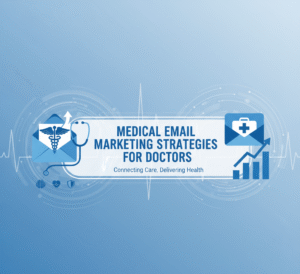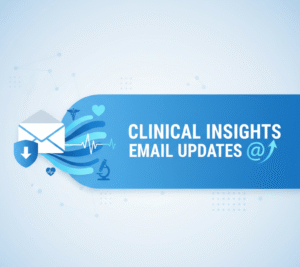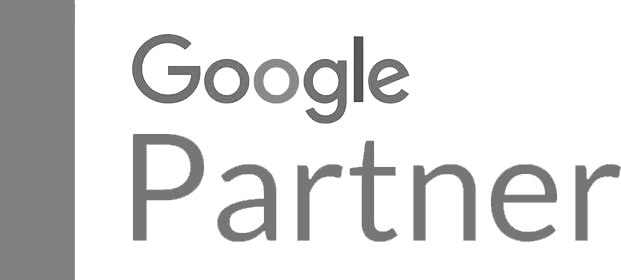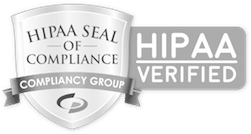“Discover proven marketing strategies to attract high-value patients, covering distinct approaches for cash-pay and insurance-based customers to grow your medical practice rapidly.”
In today’s complex healthcare market, growing a medical practice is about more than just clinical excellence. It’s about smart, strategic marketing. A common mistake many practices make is using a one-size-fits-all approach to patient acquisition. The patient who finds you through their insurance provider’s directory is on a completely different journey than the patient who is ready to pay cash for a specific outcome. Understanding their unique motivations, fears, and decision-making processes is the key to creating marketing that resonates, converts, and ultimately helps you attract high-value patients who fit your practice perfectly.
Failing to distinguish between these groups means you’re likely wasting marketing dollars. Your message about accepting Aetna falls flat with a cash-pay patient seeking the best specialist. Conversely, your beautifully produced video on a premium, elective procedure won’t connect with a patient whose primary concern is finding a provider within their tight network.
This comprehensive guide will break down the essential differences between marketing to insurance-based patients and cash-pay patients. We will explore distinct patient marketing strategies for each, covering everything from website messaging and digital advertising to pricing and retention. By the end, you’ll have a clear roadmap for building a robust, dual-pronged marketing engine that fuels sustainable medical practice growth.
The Tale of Two Patients: Understanding Their Core Motivations
Before you can craft a single ad or write a line of website copy, you must get inside the heads of your prospective patients. They aren’t a monolith. Their financial situations and healthcare philosophies create two very different personas.
The Insurance-Reliant Patient: Navigating the Network
Think of the insurance patient as a “logic-driven navigator.” Their journey to your office is often dictated by a set of rules and constraints established by their health plan. Their primary goal is to receive quality care while minimizing their personal out-of-pocket expenses.
- Primary Driver: Coverage and Cost-Sharing. Their first question is almost always, “Do you take my insurance?” The answer to this question is a hard gatekeeper. If you’re not in their network, the conversation is usually over before it begins. Their world revolves around co-pays, deductibles, co-insurance, and out-of-pocket maximums. They are susceptible to these immediate costs.
- Decision-Making Path: Their search often starts not on Google, but on their insurer’s “Find a Doctor” portal. They are presented with a list of in-network providers and must then sift through them. After identifying a few options, they will turn to Google, Healthgrades, or Zocdoc for social proof—reviews, ratings, and basic information—to validate their choice. Convenience, such as location and appointment availability, is a huge factor.
- What They Value Most:
- In-Network Status: This is non-negotiable.
- Clarity: They need your staff to be experts at explaining their benefits in simple terms. Confusion leads to frustration and mistrust.
- Convenience: Easy scheduling, minimal wait times, and a nearby location are highly valued.
- Validation: Positive reviews from other patients give patients the confidence to book an appointment with one in-network provider over another.
- Most significant Pain Points: This patient’s biggest fear is the dreaded “surprise bill.” They worry about hidden fees, services that weren’t pre-authorized, and the confusing labyrinth of medical billing. They are also frustrated by long hold times with insurance companies and practices that can’t give them a straight answer about costs.
The Cash-Pay Patient: The Value-Driven Investor
In contrast, the cash-pay (or self-pay) patient is an “investment-minded consumer.” They have consciously decided to step outside the constraints of the insurance system to get exactly what they want. They are not just buying a service but investing in a specific result, a higher level of care, or access to expertise they can’t find elsewhere.
- Primary Driver: Value and Outcomes. This patient’s first question is not about insurance. It’s about results. “Are you the best?” “Can you solve my specific problem?” “What kind of outcome can I expect?” They are willing to pay a premium, but they need to be thoroughly convinced that the value they receive is worth the cost. This group includes patients seeking elective procedures (cosmetic surgery, LASIK), specialized care (functional medicine, anti-aging), or those simply fed up with the limitations of their insurance plan.
- Decision-Making Path: Their journey is research-intensive and begins with a problem- or solution-aware search on Google. They use particular, long-tail keywords like “cost of dental implants in Denver” or “best functional medicine doctor for Hashimoto’s disease.” They will consume vast amounts of content—reading detailed blog posts, watching doctor-led informational videos, scrutinizing before-and-after galleries, and reading every single review and testimonial they can find. They are comparing you to local competitors and potentially to top providers nationwide.
- What They Value Most:
- Expertise and Authority: They want to see your providers as thought leaders in their field. Credentials, publications, speaking engagements, and media mentions matter.
- Transparency: Pricing transparency in healthcare is the cornerstone of trust for this patient. They expect to find clear costs, package deals, and financing options on your website. Hiding your prices is a major red flag.
- The Experience: They are paying for a premium service and expect a “white-glove” experience from beginning to end. This includes a beautiful office, attentive staff, direct access to the provider, and seamless communication.
- Social Proof of Results: Testimonials and case studies are far more potent than simple star ratings. They want to see detailed stories from patients just like them who achieved the results they desire.
- Most significant Pain Points: Their biggest fear is investing substantial money and not getting the promised outcome. They are wary of vague promises, hidden costs, and impersonal, “assembly-line” care. They will walk away from practice that doesn’t make them feel seen, heard, and confident in their investment.
Mastering Insurance Patient Acquisition
Your marketing must be built on clarity, accessibility, and trust to attract patients who rely on insurance effectively. The goal is to make it easy for them to find you, confirm you’re in their network, and feel confident in their choice.
Step 1: Make Your Network Status Impossible to Miss
This is the most critical piece of information for an insurance patient. You must broadcast the plans you accept loudly and clearly across all your digital properties.
- Website: Don’t bury this information. Create a dedicated “Insurances Accepted” page with a searchable list of providers. Better yet, feature the logos of the major carriers you work with directly on your homepage. This provides an instant visual confirmation.
- Google Business Profile (GBP): Your GBP is often a local searcher’s first impression of your practice. Ensure the “Insurance Info” section is filled out and regularly updated. Google sometimes allows patients to filter search results by insurance, making this an essential optimization step.
- Healthcare Directories: Patients heavily use platforms like Zocdoc, Healthgrades, and Vitals. Inaccurate insurance information on these sites is a primary source of patient frustration. Conduct a quarterly audit of your profiles to ensure all data is correct.
Step 2: Dominate Local, Insurance-Based Search
Your digital marketing for doctors must target patients precisely where they are looking. For insurance patients, this means dominating local search results for insurance-specific queries.
- Local SEO (Search Engine Optimization): The core of your strategy should be optimizing your website and GBP for keywords that combine your specialty, location, and the insurance plans you accept.
- On-Page SEO: Create service pages and blog posts incorporating these keywords. For example, a blog post titled, “Finding a Urologist in Boston That Accepts Blue Cross Blue Shield.” Your homepage title tag might be “Top-Rated Dermatologist in Miami, FL | Accepting Cigna & Aetna.”
- GBP Optimization: Consistently gather positive reviews. Use Google Posts to announce if you’ve started accepting a new insurance plan. Ensure your name, address, and phone number (NAP) are consistent everywhere online.
- Targeted PPC (Pay-Per-Click) Advertising: Google Ads allows you to reach patients when they are searching.
- Campaign Structure: Create ad groups specifically for major insurance carriers. For example, one ad group could target keywords like “+ primary care doctor + accepts + unitedhealthcare” while another targets “+ pediatrician + Cigna + near me.”
- Ad Copy: Your ad headline and description must mention the insurance plans. An example ad could read: “In-Network Cardiologist in Chicago. We Accept Aetna PPO. Book Online Today!”
- Landing Pages: The link in your ad should go to a page that immediately confirms you accept their insurance, building instant trust and reducing bounce rates.
Step 3: Build Trust and Simplify the Process
Once a patient confirms you are in-network, their next step is to decide if you are the right provider for them. Your marketing should ease their anxieties and make the next step effortless.
- Leverage Reviews: Actively manage your online reputation. Use an automated system to request reviews from happy patients. Display a feed of your best reviews directly on your website. A high volume of recent, positive reviews is powerful social proof.
- Streamline the Front End: The patient experience begins long before they enter the exam room.
- Staff Training: Your front desk team must be well-versed in insurance terminology. They should be able to confidently and patiently answer questions about co-pays and deductibles. Providing them with scripts for common questions can be incredibly helpful.
- Online Booking: Reduce friction by offering a simple, 24/7 online scheduling tool. This massive convenience factor can set you apart from other in-network options.
- Educational Content: Create an “Insurance & Billing FAQ” section on your website. Proactively answering common questions shows that you understand their concerns and are committed to transparency, which is a powerful way to build trust before they even pick up the phone.
How to Attract High-Value Cash-Pay Patients
Marketing to cash-pay patients requires a complete shift in mindset and strategy. You are no longer selling an in-network commodity but a premium solution, a transformative outcome, and an unparalleled experience. Your marketing must communicate immense value at every touchpoint.
Step 1: Embrace Radical Pricing Transparency
For the cash-pay patient, ambiguity about cost is the ultimate deal-breaker. They are sophisticated consumers who expect to know the price of a significant investment before committing. Hiding your prices creates suspicion and forces them to look elsewhere.
- Create a Detailed Pricing Page: This is the most important page on your website for a cash-pay prospect. Don’t just list a single number. Break it down.
- List “A La Carte” Services: The price for an initial consultation, a follow-up visit, a specific lab test, etc.
- Offer Service Packages: Bundle standard services together for a single, clear price. For example, a “New Patient Wellness Package” includes a comprehensive exam, advanced bloodwork, and a detailed follow-up. This is a fantastic cash-pay patient marketing technique.
- Explain What’s Included: Clearly state what the price covers to prevent misunderstanding. Does the surgical fee include all pre-op and post-op visits? Does the consultation fee include a review of prior medical records? Be specific.
- Promote Financing Options: Many patients can afford a procedure but may not have the full amount available in cash. Prominently feature third-party financing options like CareCredit or PatientFi. Include a payment calculator on your pricing page to show them how affordable the monthly payments can be. This removes a significant psychological barrier to entry.
Step 2: Become the Undeniable Expert Through Content Marketing
Cash-pay patients are not looking for a generalist; they are looking for an expert. The most effective way to demonstrate your authority is through high-value, educational content, a core pillar of patient engagement techniques.
- In-Depth, Problem-Solving Blog Posts: Go beyond surface-level articles. Write 2,000-word “pillar pages” or ultimate guides on the specific conditions and treatments you specialize in. For a cosmetic surgeon, this could be a guide to the “deep plane facelift.” For a functional medicine doctor, it could be a comprehensive article on “reversing insulin resistance.” This content proves your expertise and helps you rank for high-intent SEO keywords.
- Doctor-Led Video Content: Video is unmatched for building a personal connection and conveying authority.
- Procedure Explainers: Have your doctors explain a complex procedure in simple, easy-to-understand terms. This will demystify the process and build trust.
- Q&A / “Ask the Doctor” Sessions: Host live Q&A sessions on social media or create a video series answering the most common questions you receive.
- Patient Testimonial Videos: The most powerful marketing asset you can create is a professionally produced video of a happy patient telling their story and showing their results.
- Visual Proof of Results: For any visually-oriented specialty (dermatology, plastic surgery, cosmetic dentistry, orthodontics), a robust and well-organized before-and-after gallery is essential. It’s the ultimate proof of your capabilities and allows prospects to visualize their potential transformation.
Step 3: Deploy Sophisticated, Value-Focused Digital Advertising
Your targeted healthcare advertising for cash-pay patients should focus on the transformation you provide, not just the service itself.
- High-Intent SEO and PPC: Target long-tail keywords that signal a consumer mindset. Instead of “dentist near me,” target “all-on-4 dental implants cost Dallas.” These searchers have already identified a solution and are now in the “comparison shopping” phase, looking for the best provider. Your ads and landing pages should speak directly to this.
- PPC Ad Copy: Focus on benefits, not just features. Instead of “We Offer Botox,” try “Look 10 Years Younger. Expert Botox Injections by Dr. Smith. See Our Gallery.”
- Landing Pages: Your ad should lead to a dedicated landing page about that specific service. The page must feature a compelling headline, social proof (testimonials), visual evidence (before-and-afters), transparent pricing information, and a clear call-to-action (e.g., “Schedule a Free Virtual Consultation”).
- Social Media Advertising (Facebook & Instagram): These platforms are ideal for reaching cash-pay audiences with visually compelling content. You can target users based on interests (e.g., luxury brands, wellness, fitness), behaviors, and lookalike audiences built from your existing patient list. Video ads and carousels showcasing patient transformations perform exceptionally well.
Bridging the Gap: Universal Strategies for Patient Retention
While the methods for attracting high-value patients differ, the strategies for keeping them are remarkably similar. A fantastic patient experience is the great equalizer. Once a patient is in your system, regardless of how they pay, their loyalty is earned through exceptional care, seamless communication, and a feeling of being genuinely valued. Excellent patient retention strategies are the key to long-term profitability.
The Experience is Your Brand
Every single interaction a patient has with your practice shapes their perception.
- The First Impression: A warm, empathetic voice on the phone can instantly set a positive tone. Conversely, a rushed or unhelpful front desk can sour a relationship before it even starts.
- The Office Environment: A clean, modern, and comfortable waiting area communicates professionalism and respect for the patient’s time and comfort.
- Clinical Interaction: Of course, excellent clinical care is paramount. But beyond that, patients remember providers who listen attentively, explain things clearly, and show genuine concern for their well-being.
- The Last Impression: A smooth, simple checkout and billing process leaves a lasting positive impression. Following up after a significant procedure with a personal phone call from a staff member or doctor can create a bond for life.
Technology-Driven Patient Engagement
Modern technology allows you to maintain a connection with patients and provide value long after they leave your office.
- Patient Portal: A user-friendly patient portal is no longer a luxury; it’s an expectation. Patients want 24/7 access to their health records, lab results, and a secure way to message their team with questions.
- Automated Communication (Email & SMS): Use automation for more than just appointment reminders. Send pre-visit instructions, post-visit follow-ups, and preventative care reminders (e.g., “It’s time to schedule your annual skin check!”).
- Strategic Email Marketing: Segment your patient list. You can send helpful updates to insurance-based patients during open enrollment periods. For cash-pay patients, you can announce new high-value services, introduce special package pricing for a limited time, or share links to your latest educational blog posts and videos. This targeted communication keeps your practice top-of-mind and reinforces your value.
Building a Loyal Community
Turning patients into evangelists is the ultimate goal of retention.
- Ask for Feedback: Regularly survey patients about their experience. This will provide you with invaluable data to improve your operations, and asking will show that you care about their opinion.
- Actively Manage Your Reputation: Respond professionally and promptly to all online reviews, both positive and negative. Thanking patients for positive feedback and addressing concerns in negative reviews demonstrates your commitment to patient satisfaction.
InvigoMedia: Your Expert Partner in Healthcare Marketing
Navigating the distinct marketing channels for insurance and cash-pay patients is a complex, full-time job. It requires deep expertise in healthcare compliance, patient psychology, and the ever-changing digital landscape. Managing this in-house while running a busy medical practice can limit your resources and lead to mediocre results.
This is where a specialized partner can make all the difference. InvigoMedia is a leading digital marketing agency with proven experience and authority in the healthcare space. We don’t use generic marketing playbooks; we develop custom patient marketing strategies to help medical practices attract high-value patients and achieve sustainable growth.
We understand the nuances that separate a successful cash-pay patient marketing campaign from an effective insurance patient acquisition funnel. Our team of experts provides a comprehensive suite of services to cover every aspect of your practice’s growth:
- Healthcare SEO: We implement cutting-edge SEO techniques to ensure you rank at the top of Google for high-volume, insurance-based local searches and the high-intent, solution-focused queries of cash-pay patients.
- Medical PPC Advertising: Our specialists create highly targeted healthcare advertising campaigns on Google, Facebook, and Instagram. We write compelling ad copy that speaks directly to each patient persona’s unique motivations, maximizing your return on ad spend.
- Custom Medical Web Design: We build beautiful, fast, and mobile-friendly websites strategically designed to convert. Our sites make it easy for insurance patients to verify their coverage while showcasing the immense value and expertise needed to capture the cash-pay market.
- Patient Outreach & Retention: We help you implement sophisticated patient engagement techniques, including automated email marketing, social media management, and proactive reputation management to keep your schedule full with loyal, returning patients.
Don’t leave your practice’s growth to chance—partner with an agency specializing in healthcare marketing.
Ready to build a robust patient acquisition engine that works for your entire practice? Contact InvigoMedia today for a free, no-obligation consultation and discover how we can help you achieve your growth goals.
Frequently Asked Questions (FAQs)
Q1: Should my practice focus on attracting only cash-pay patients or only insurance patients?
A: This depends on your specialty, location, and business goals. Specialties like cosmetic surgery naturally lean toward cash-pay, while primary care relies heavily on insurance. However, many practices, such as dermatology or orthopedics, can thrive with a hybrid model. The key isn’t to choose one over the other but to have distinct, well-defined marketing strategies for each, rather than a single, ineffective approach.
Q2: I’m worried that increasing prices online will scare patients away. Is pricing transparency really a good idea?
A: For the cash-pay patient, the opposite is true. Hiding your prices scares them away. It creates friction, makes them feel like you have something to hide, and forces them to call, which many hesitate to do early in their research. For this group, transparency builds immediate trust and qualifies them as leads. Insured patients are less concerned with the total sticker price, so it doesn’t negatively impact them. It’s a win-win.
Q3: What is the most critical marketing asset for attracting local insurance patients?
A: Undoubtedly, it’s a completely optimized Google Business Profile (GBP). It’s free and often the first thing a patient sees when searching for a local doctor. A GBP with accurate insurance information, a high volume of recent positive reviews, correct hours, and an easy-to-use booking link is a potent tool for capturing in-network patients.
Q4: How long does it typically take to see a return on investment from these marketing strategies?
A: It varies by tactic. Paid advertising, like Google Ads (PPC), can quickly generate phone calls and appointments, sometimes within the first month. SEO, on the other hand, is a long-term investment in your practice’s visibility. It generally takes 4-6 months of consistent effort to see significant improvements in search engine rankings and organic traffic, but the results are more sustainable over time. A blended strategy often yields the best short-term and long-term results.
Q5: We already have a marketing person on staff. How can an agency like InvigoMedia help us?
A: A specialized healthcare marketing agency complements your in-house team by bringing expertise and resources that are difficult to develop internally. We have deep knowledge of healthcare-specific challenges, including HIPAA compliance in marketing. We have access to advanced analytics tools, a team of specialists (in SEO, PPC, content, etc.), and a wealth of data from working with numerous other practices. We can provide the high-level strategy and expert execution to take your marketing efforts to the next level.













